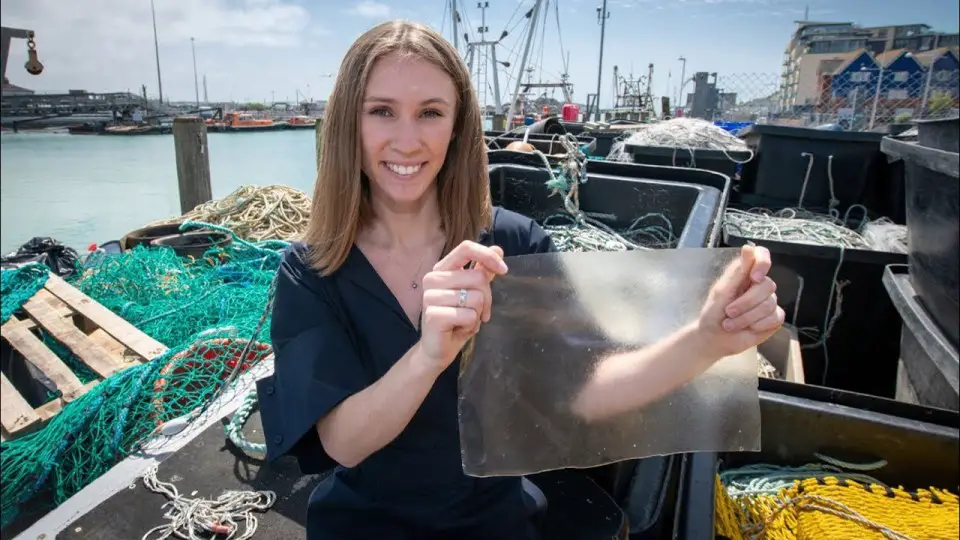This Compostable Bioplastic Bag Made From Fish Waste Won The James Dyson Award
Tags: News

A graduate from the University of Sussex has designed a material that turns fish waste into a useful packaging product that is also entirely compostable. Named MarinaTex, the substance is a bioplastic that uses fish waste to make unique sheet material that is both flexible and translucent. The invention has helped the designer Nancy Hughes pick up this year’s James Dyson Award.

It is ideal for the packaging industry and has the potential to replace plastic used in everyday packaging. The material is made from a combination of red algae, that is readily available locally and fish waste that is otherwise incinerated or used as a landfill. It is an ideal alternative material for single-use plastic including containers for perishable foods and grocery bags. It doesn’t require specialized disposable systems and can decompose in domestic composts or waste bins within 4-6 weeks.
Also read: Ikea To Use Mushroom Based Packaging That Will Decompose In A Garden Within Weeks
The fish processing industry throws up over 500,000 tons of waste in the UK alone as per data released by the UK sea fish industry authority. Her unique invention addresses the predicament of waste disposal and unearths a compostable substitute for the scourge of plastic.

The James Dyson Award recognizes and supports the new generation of design engineers from all over the world. She won the top prize that carries £2,000 ($2,500) for the UK edition and entry to the international edition that carries a top award of £30,000 ($37,500).
The development of MarinaTex is her project for the final-year at her course in product design for which she enrolled at the University. She was inspired to create a design that addresses the environmental issue. She realized that huge quantities of fish by-products are wasted every year. And further disposing of such huge quantities in landfills or incineration creates an environmental hazard. She hit upon the idea to use the skin and the scales to make something meaningful.
Also read: This Desk-Sized Turbine Can Power A Small Town Using Carbon Dioxide
She consciously decided not to opt for virgin materials and resolved to find a waste alternative. In her opinion, a superior quality design closes the space between attitude, commerce, and the planet.

Her product successfully does away with the need to set up an additional infrastructure for waste management. An Atlantic cod produces sufficient waste to make 1,400 bags. She believes that plastic is an amazing material and should be used to make durable products and not wasted on products that have a life cycle of a few hours.
Over 5000 people have downloaded our free ebook “Growth Hacking Tips And Rituals For Optimal Living” CLICK HERE to get your free copy now
She finalized her product after more than 100 experiments to strengthen and refine the material. She used a gelatinous matter found in the cell of some red algae species as a binding agent. Most of her experiments were carried out using basic devices in her student lodgings.

The material has a tensile strength higher than low-density polyethylene (LDPE), the most widely used material for making plastic bags. Her product can decompose into the soil in a mere 6 weeks. It fulfills her dream to create an alternative to plastic that is genuinely environmentally friendly.

Leave Comment: